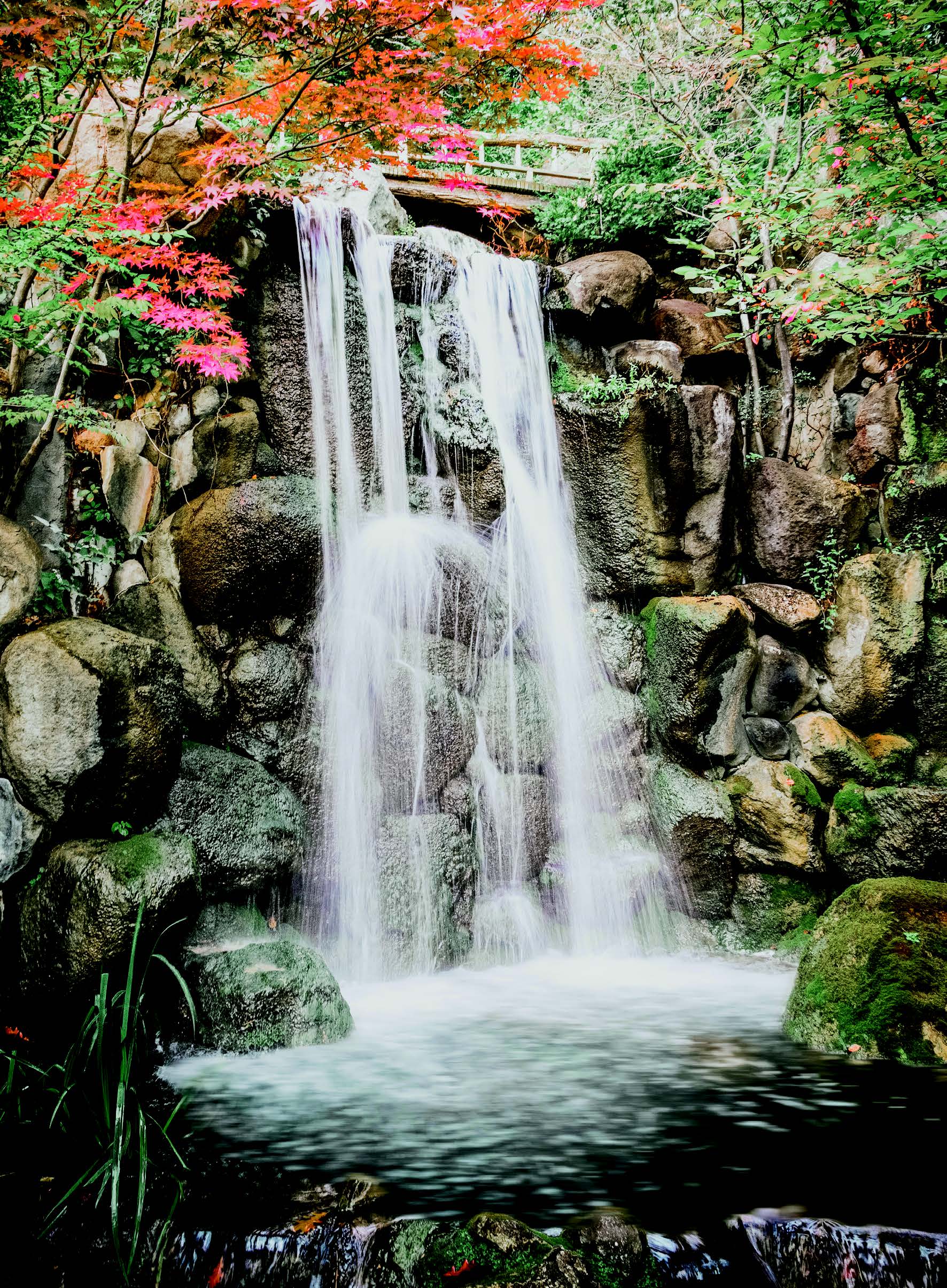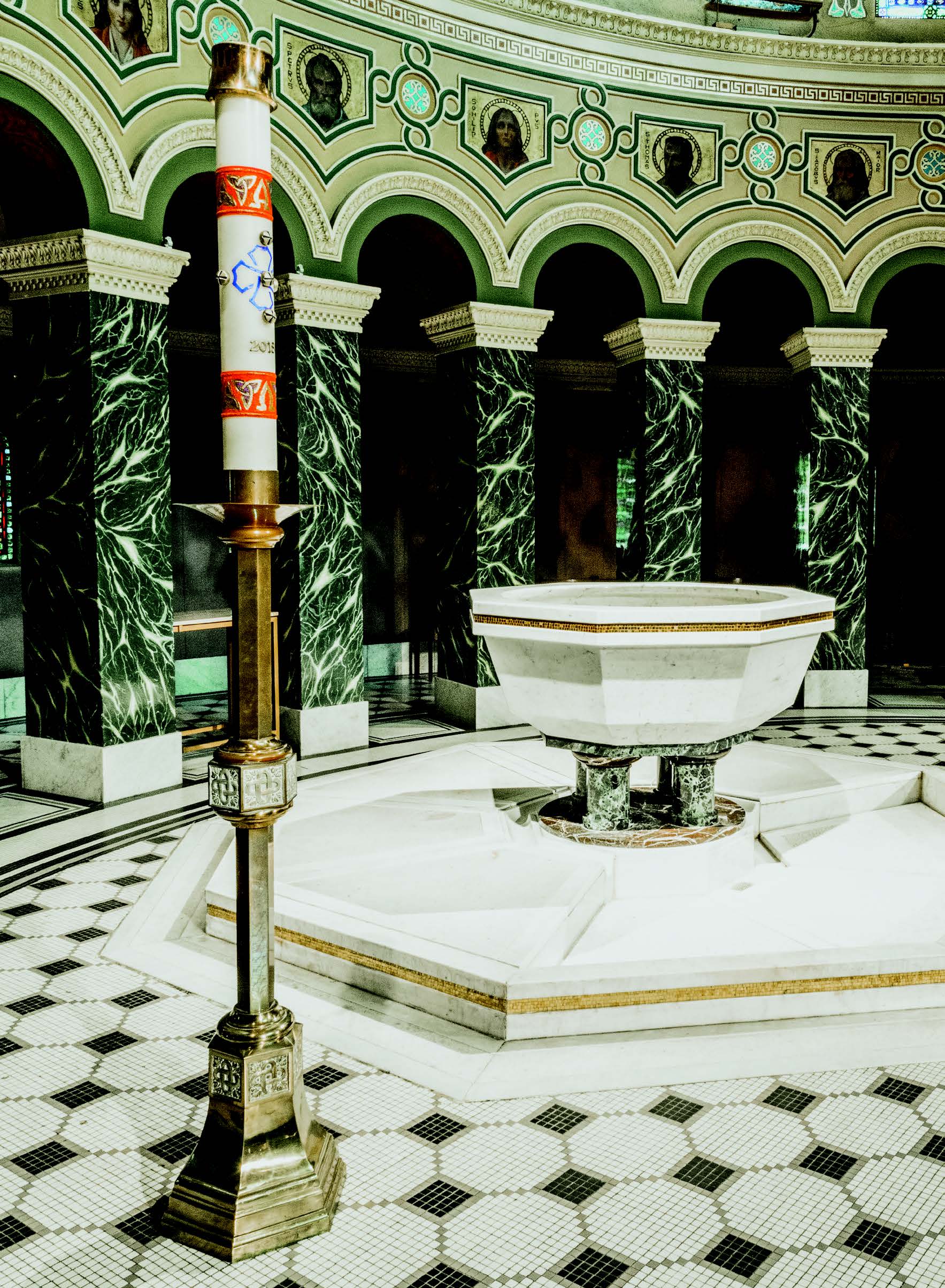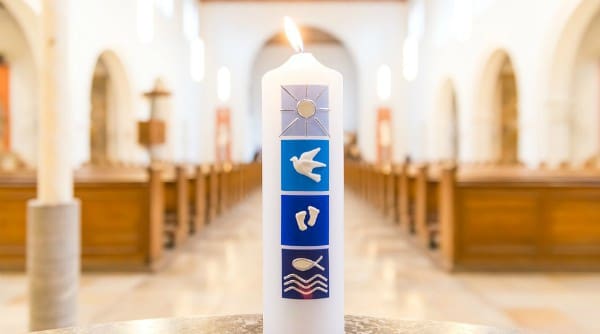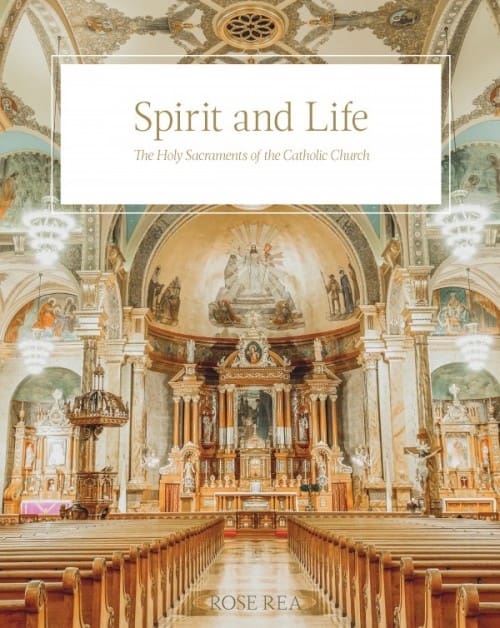Baptism as spoken about in
Sacred Scripture
Baptism as spoken about in
Go therefore and make disciples of all nations, baptizing
them in the name of the Father and of the Son and of
the Holy Spirit, teaching them to observe all that I have
commanded you; and lo, I am with you always, to theclose of the age. —Matthew 28:19-20
Jesus answered, “Truly, truly, I say to you, unless one
is born of water and the Spirit, he cannot enter the
kingdom of God. That which is born of the flesh is flesh,
and that which is born of the Spirit is spirit. Do not
marvel that I said to you, ‘You must be born anew.’”
—John 3:5-7
Baptism according to the
Catechism of the Catholic Church
Holy Baptism is the basis of the whole Christian life, the gateway to life in the Spirit, and the door which gives access to the other sacraments. Through Baptism we are freed from sin and reborn as sons of God; we become members of Christ, are incorporated into the Church and made sharers in her mission: “Baptism is the sacrament of regeneration through water in the word” (1213).
This sacrament is called Baptism, after the central rite by which it is carried out: to baptize (Greek baptizein) means to “plunge” or “immerse”; the “plunge” into the water symbolizes the catechumen’s burial into Christ’s death, from which he rises up by resurrection with him, as “a new creature.” (1214).
This sacrament is also called “the washing of regeneration and renewal by the Holy Spirit,” for it signifies and actually brings about the birth of water and the Spirit without which no one “can enter the kingdom of God” (1215).
“This bath is called enlightenment, because those who receive this [catechetical] instruction are enlightened in their understanding . . . .” Having received in Baptism the Word, “the true light that enlightens every man,” the person baptized has been “enlightened,” he becomes a “son of light,” indeed, he becomes “light” himself:
Baptism is God’s most beautiful and magnificent gift. . . . We call it gift, grace, anointing, enlightenment, garment of immortality, bath of rebirth, seal, and most precious gift. It is called gift because it is conferred on those who bring nothing of their own; grace since it is given even to the guilty; Baptism because sin is buried in the water; anointing for it is priestly and royal as are those who are anointed; enlightenment because it radiates light; clothing since it veils our shame; bath because it washes; and seal as it is our guard and the sign of God’s Lordship. (1216)

All the Old Covenant prefigurations find their fulfillment in Christ Jesus. He begins his public life after
having himself baptized by St. John the Baptist in the Jordan. After his resurrection Christ gives this mission to his apostles: “Go therefore and make disciples of all nations, baptizing them in the name of the Father and of the Son and of the Holy Spirit, teaching them to observe all that I have commanded
you” (1223).
By Baptism all sins are forgiven, original sin and all personal sins, as well as all punishment for sin. In those who have been reborn nothing remains that would impede their entry into the Kingdom of God, neither Adam’s sin, nor personal sin, nor the consequences of sin, the gravest of which is separation from God (1263).
The Most Holy Trinity gives the baptized sanctifying grace, the grace of justification: – enabling them to believe in God, to hope in him, and to love him through the theological virtues; – giving them the power to live and act under the prompting of the Holy Spirit through the gifts of the Holy Spirit; – allowing them to grow in goodness through the moral virtues. Thus the whole organism of the Christian’s supernatural life has its roots in Baptism (1266).
Baptism makes us members of the Body of Christ: “Therefore . . . we are members one of another.” Baptism
incorporates us into the Church. From the baptismal fonts is born the one People of God of the New Covenant, which transcends all the natural or human limits of nations, cultures, races, and sexes: “For by one Spirit we were all baptized into one body” (1267).

Baptism Reflection by Sam Guzman
A New Creation
Our lives are marked by two profound mysteries: birth and death. We are born in weakness and—no matter how beautiful, strong, or virile we may be—we return again to weakness.
Each day reminds us of these mysteries. We awake in the morning and are “born” anew. At night, we sleep and enter into a sort of death, lost entirely to the world of consciousness. The rhythm of birth and death, waking and sleeping defines the whole fabric of our lives. It is the life lived between these passages that defines who we become.
Birth and death are inescapable in the realm of matter. So too they define the reality of our spiritual lives,
though, strange as it is to say, the process is inverted. We are all born suffering the fruit of Adam’s sin and plagued by disordered passions and desires. We are at war with ourselves and others. But the most bitter fruit of all is death.
We were not made for death. It is foreign to the purpose of our creation. We were made for life, for full and intimate communion with God, who is Life itself. We were created to be temples of the living God, participants in His Being. The Holy Trinity dwelt within us in our original blessed state, penetrating every fiber of our being and renewing us at every moment. This was the source of our eternal life—drawing our vitality ceaselessly from the fountain of all Life, all Being, all Goodness, which is God Himself.
But the serpent deceived our original parents. He convinced them that they could live apart from God. “You will not die,” were his words. He sowed the seeds of doubt; the lie of radical autonomy and self-sufficiency; the heresy that is the source of all others: that anyone or anything can live and thrive apart from communion with God.
Adam and Eve believed this lie. They disobeyed God, and in that moment the flow of living energy was cut off from them. They entered into spiritual death, and their bodies, too, began slowly to die. Death and decay and disorder entered the world…
+
This article is adapted from a chapter in Spirit and Life by Rose Rea, which is available from Sophia Institute Press.
Art for this post on the Sacrament of Baptism: Cover and interior images used with permission; Featured image used with permission of Pixabay.
To read more about the Sacraments, click HERE.





